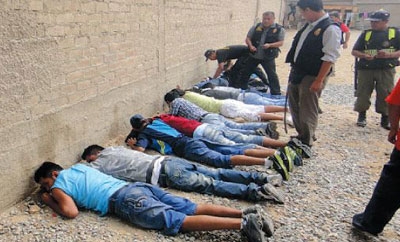Peruvian authorities have dismantled a Colombian money laundering network that allegedly moved $10 million per month through illegal loans, raising the question of why Colombians have chosen to use Peru to run these types of criminal operations.
A Peruvian woman and 16 Colombians operating in Lima, Huancayo and Iquitos were arrested, and three buildings, ten vehicles, firearms, money and computers confiscated from the group, reported La Republica.
According to Public Ministry officials, the group used social networking sites to launder funds of illicit origin by offering immediate loans of up to $25,000 with no guarantee. After granting the loan, the network charged monthly interest rates of between 40 to 60 percent and in some cases kidnapped debtors who defaulted, forcing their family members to sell off whatever they could in order to pay back the loan.
According to news site Peru.com, the Huancayo-based members were called “Los Armenios de Colombia” (the Armenians of Colombia) and simultaneously worked selling fruit and pastries.
InSight Crime Analysis
Peru’s apparently lax money laundering controls may help to explain why a Colombian gang chose to use the country as its operational base. Despite the implementation of a national plan to combat money laundering, the government reported in 2012 that the country had not achieved any convictions for money laundering, and that of around 120 cases investigated, only four had resulted in judicial proceedings. In June, Peruvian authorities reported a rise in money laundering through small businesses, with official data indicating that 3.5 percent of annual GDP may be the product of illicit funds. Police corruption exacerbates the situation — as of June, 900 police were under investigation in Peru for complicity in crimes including money laundering and kidnapping.
One interesting question is how the Colombians were able to operate without being pushed out by Peruvian gangs. The majority of Peruvian gang members — over 12,000 of 13,000 — are believed to be concentrated in Lima, according to one report, possibly leaving the Huancayo and Iquitos markets open for control.
The case illustrates how the internet helps to facilitate illicit financial activities, providing a largely unregulated platform for the transfer of funds, and provides an example of the increasingly diverse ways organized criminals are using social media, a topic examined by InSight Crime last month.

